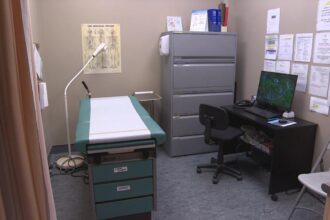In a pivotal meeting that could reshape Steinbach’s healthcare landscape for decades to come, the Eastern Regional Municipal Committee (ERMC) has unveiled ambitious plans balancing medical infrastructure expansion with environmental sustainability. The comprehensive strategy, presented during last week’s four-hour session, marks a significant departure from previous piecemeal approaches to regional healthcare planning.
“What we’re witnessing is not just a facilities upgrade, but a fundamental rethinking of how healthcare services are delivered in our growing region,” said Dr. Eleanor Friesen, Chief Medical Officer for the Steinbach Health Authority. “The 2025 vision acknowledges that modern healthcare must extend beyond hospital walls.”
The cornerstone of the development plan includes a 120,000-square-foot expansion to the Bethesda Regional Health Centre, featuring specialized trauma units and mental health facilities that have long been advocated for by local healthcare advocates. This represents the largest healthcare infrastructure investment in the region’s history, with a projected budget of $78.3 million allocated from provincial and municipal funding sources.
What distinguishes this initiative from previous development efforts is its integration with environmental considerations. The committee has mandated that all new healthcare facilities must meet LEED Gold certification standards—a requirement that adds approximately 12% to construction costs but promises significant long-term operational savings. The development will incorporate renewable energy systems expected to offset nearly 40% of energy consumption across healthcare facilities.
“We’re building for the next generation, not just addressing today’s needs,” explained Regional Councillor Martin Toews. “These facilities must be resilient against both increasing patient demands and our changing climate reality.”
The planning committee faced significant challenges balancing urgent healthcare needs with environmental priorities. Several committee members expressed concerns about potential delays caused by stringent environmental requirements, particularly given the current 17-week average wait time for non-urgent procedures at Bethesda.
“Every week of construction delay translates to real patient impacts,” noted committee member Sarah Klassen during the deliberations. “Yet we recognize that building unsustainably now creates larger problems down the road.”
The development plan also addresses growing physician recruitment challenges, with dedicated housing units for medical professionals integrated into the campus design—a novel approach that has shown success in similarly sized communities across Western Canada. The committee has allocated funding for twelve physician residence units, expected to significantly improve retention rates for specialists who have historically been difficult to attract to the region.
Public reaction has been largely supportive, though concerns about traffic congestion and construction disruption have emerged from neighborhoods adjacent to the healthcare campus. The committee has promised additional community consultation sessions throughout July to address these concerns.
“Healthcare development inevitably creates growing pains,” acknowledged ERMC Chair Thomas Penner. “Our job is to ensure the benefits substantially outweigh temporary disruptions.”
The plan awaits final approval from provincial health authorities, expected by September, with groundbreaking ceremonies tentatively scheduled for early 2026. Once completed, the expanded facilities will serve an estimated regional population of 78,000—a substantial increase from current capacity.
As Steinbach positions itself as a regional healthcare hub, the question remains: can this ambitious integration of healthcare development and environmental sustainability serve as a template for similar communities, or will the competing priorities ultimately force compromises to one vision or the other?










